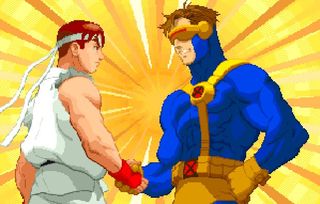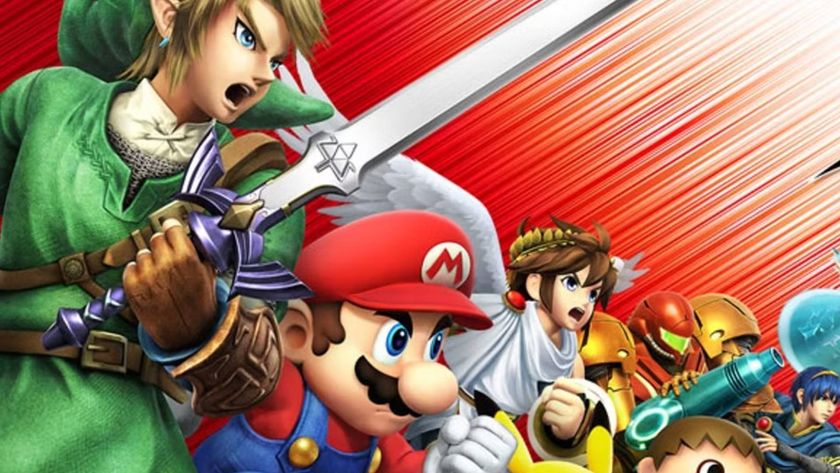Marvel vs Capcom: a history of the Vs fighting series
VIDEO: Seth Killian walks us through 16 years of fighting history
After 11 years of anticipation, speculation and plain ol’ hoping against hope, Marvel vs Capcom 3 is finally a reality. We’re now just a few days away from its worldwide release, so naturally interest in this long-awaited sequel is at its peak. Capcom’s got a strong new roster of characters, and Marvel is arguably more popular now than it’s ever been, so the time is perfect for a new entry in the long-lasting Vs series.

Above: A licensing nightmare finally realized
But where did it all start? No, not with Marvel vs Capcom 1; the Vs series dates all the way back to the arcade glory days of 1994-1996, when words like CPS2 and Q-Sound were on the tips of everyone’s tongue. Join us as Capcom’s own Seth Killian hosts our journey through fighting history, beginning with X-Men: Children of the Atom.
The beginning

As Seth points out in the video, many of the fundamentals of the Vs series begin with Children of the Atom. You’ve got aerial combos, big open playfields, super jumps, hyper combos and, most obviously, all the meticulously animated sprites that would be used for the next six years.

That led into 1995’s Marvel Super Heroes, which expanded the cast beyond the X-Men, adding heavy hitters like Spider Man, Captain America and Dr Doom. Its notable exclusive feature is the Infinity Gauntlet and its gems (Space, Time, Reality, Power, Soul and Mind), which you can activate during a match for various effects. These two titles performed well, and Street Fighter was still doing big business, so that naturally led to…
X-Men vs Street Fighter

Company crossovers are commonplace today, but the very idea of X-Men and Street Fighter mixing it up in a game, in 1996, was on par with Roger Rabbit’s Disney/Warner Bros team up. Here are two unrelated properties you know and love, interacting with each other in ways that are usually reserved for fan fiction or “Who would win in a fight between...” forums. Sure it doesn’t make the most sense (how could Ryu ACTUALLY beat Magneto?) but it was damn fun and irresistible to watch.

Above: May I also say the art is fantastic?
Sign up to the 12DOVE Newsletter
Weekly digests, tales from the communities you love, and more

Above: The roster was a mix of Children of the Atom and Street Fighter Alpha 2, plus Rogue, Sabretooth, Gambit, and the first “Shadaloo” Cammy costume
The big addition was tag-team play, which had you pick two characters instead of the usual one. At any point you could call your other fighter into the match, allowing the other to regenerate small amounts of health. More importantly, the tagging added another layer of combo opportunities, where you could start a combo, then tag the other fighter to finish it off. The ultimate culmination would always be a team combo, which has gone on to become the hallmark of the Vs series – a huge, screen-filling attack that racks up hits and shreds your eyeballs.

Above: XvSF also had a lot of small comic book touches that future games would lose – notice the panels in the background

Above: And then the Game Over screen has even more comic/game mashups
When it came time to bring XvSF home, the only options were Sega Saturn and the original PlayStation. Saturn was already flailing in the US, so we never saw an official release – however, you could import the Japanese version, and with an Action Replay attachment, enjoy an arcade-perfect conversion. The PS1 version, on the other hand, came to the US but suffered severe cuts to deal with the limited tech. As in, no tagging characters in and out, which was kinda the whole point of the game. Naturally this led most serious players to favor the imported Saturn version, which remains a blast to this day.
Speaking of XvSF’s longevity, Seth also had this to say concerning the game’s competitive legacy:
Next page: The Vs series expands to include more than just the X-Men and Street Fighter, plus adds even more ways to slap your opponent around
A fomer Executive Editor at GamesRadar, Brett also contributed content to many other Future gaming publications including Nintendo Power, PC Gamer and Official Xbox Magazine. Brett has worked at Capcom in several senior roles, is an experienced podcaster, and now works as a Senior Manager of Content Communications at PlayStation SIE.













Super Smash Bros. Ultimate villain Minecraft Steve is the star of the "best Smash clip of all time," as genius player makes a literal Trojan Horse to destroy an unsuspecting opponent

Masahiro Sakurai says Super Smash Bros "might have died out" if not for late Nintendo president Satoru Iwata: "There's no doubt that he influenced me in many ways"





